Putting the pieces together to create a more efficient derivatives industry
Key Takeaways
- Fragmented rules hinder a more efficient derivatives landscape.
- Market participants must embrace automation and digitalization.
- The industry needs to invest in post-trade technology to achieve scalability and resiliency.
Efficiency and automation are long-running themes in the derivatives world. This year, the focus has intensified to combat the escalating costs of regulation, volatility, and volume growth, according to a Coalition Greenwich report on the derivatives market structure.
However, the steady stream and fragmented nature of legislation has made it an uphill battle. A panel discussion on the outlook for trading efficiency at FIA’s International Derivatives Expo (IDX), held in London during June, highlighted the challenges.
The industry expert panelists pointed to a survey conducted by market intelligence firm Acuiti in partnership with FIA, which found that the disparate set of global regulations has created a major burden for market participants.
There have been attempts at harmonization, most notably the Derivatives Trading Obligation (DTO) and Derivatives Clearing Obligation (DCO). The US was the first country to implement DTO and DCO as part of the Dodd-Frank Act in 2010, which led to the creation of swap execution facilities (SEFs) to support trading of interest rate and credit default swaps (CDS). Japan followed five years later with the launch of electronic trading platforms (ETPs), then Europe in 2018 under the MiFID and MiFIR banners.
Efficiency compromised
It did not take long for cracks to appear, due to the significant structural and technical changes required by these reforms, and the fallout from Brexit. The lack of standardization in message protocols, instrument codes, and post-trade processes also hampered efforts. The gradual phase-out of Libor as the industry standard reference rate for derivatives contracts further exacerbated the situation.
Tradeweb argues that the three separate reference rates from the US, UK, and Europe have created confusion about which securities are subject to DTO and DCO requirements. The main reason is that the list of products traded on EU platforms differs from the equivalent list in the US and UK, creating challenges for cross-border trades into and out of Europe.
The upshot is that a new wave of protocols has compromised the efficiency and accuracy that the initial set of post-global financial crisis regulations hoped to generate. Moreover, market participants have different local and international interpretations of the same rules.
To break down these barriers, brokers, investment banks, and clearing firms included in the Coalition Greenwich report advocate for the development and adoption of global operational standards. This would make their jobs as intermediaries easier because of their central role between end users and markets. They believe a uniform structure would help them navigate the many challenges in processing trades and moving collateral through a highly complex network of technology and data systems.
Technology is the critical piece of the jigsaw
Regulatory cohesion is only one part of the equation. Technology is a crucial component. Despite the many advances, market participants are still too dependent on manual processes. This is hindering their development and eroding their competitive edge as other more nimble and innovative players leapfrog ahead of them.
In its recent document negotiation survey, the International Derivatives and Swap Association (ISDA) points to legal contracts as a case in point. The survey found that the average time to negotiate the nitty-gritty details of main derivatives contracts had not fallen since 2006. Some discussions have taken longer due to resource constraints, regulatory pressures, and operational challenges.
The trade group reported that 70% of the 42 institutions canvassed use some form of digital automation. Nearly half exclusive employ labor-intensive methods, while many employ a combination of both.
Other areas noted in the Coalition Greenwich report in need of a technological uplift include capital and operational frameworks, counterparties, and connectivity. Although AI and machine learning have grabbed the headlines, existing technology already enhances workflows across the trade cycle, while front-to-back solutions connect data to provide real-time insights into net positions, margins, risk, analytics, and commissions.
More industry collaboration needed
While technology and regulators are important, industry cooperation is also required to move the industry dial, according to the IDX panel. Examples include the development and rollout of the FIX protocol. Launched in the 1990s, it has become the de facto messaging standard for pre-trade and trade communication in global markets and continues to expand into the post-trade space and new asset classes.
The panel also pointed to self-match prevention (SMP), which refers either to matching engine functionality, or a set of trading rules that prevent a market participant’s orders from matching against each other on the same trading venue. Many exchange operators began implementing SMP as a risk control in the run-up to MiFID II and MiFIR Articles 17 and 48, respectively. The former covers algorithmic trading, while the latter comprises systems resilience, circuit breakers, and electronic trading.
The pieces of the efficiency jigsaw are there. The regulators, technology providers, and industry players must now put them together to create a more efficient derivatives ecosystem. Until these are achieved, the costs will continue to be passed onto end clients and society as a whole.
Don't miss out
Subscribe to our blog to stay up to date on industry trends and technology innovations.


